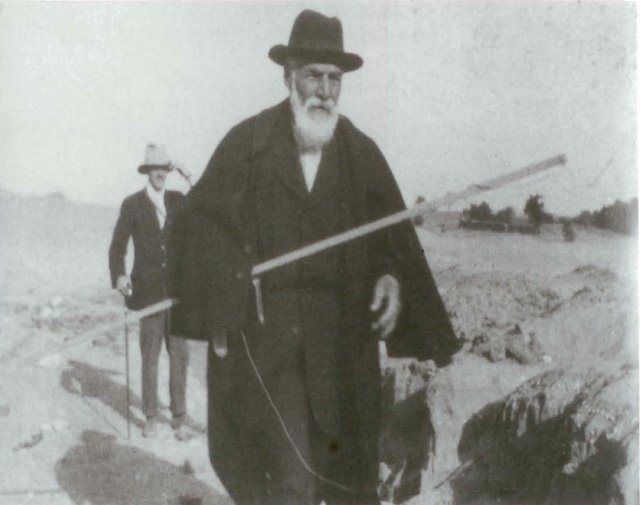The Sinai Turquoise Mines
The ruins of Serabit were first discovered by Carsten Niebuhr, a member of an early Danish expedition, in 1162. Later they attracted the attention of numerous scholars, the most famous of whom was Sir Flinders Petrie, who explored the site in 1905. In 1935 the Czech scholar Jeroslav Cðerny made a study of Serabit and later, together with Sir Alan H. Gardiner and T. E. Peet, published many of the hieroglyphic inscriptions.
Professor Raphael Giveon, Egyptologist of the University of Tel Aviv, restudied the site and found numerous inscriptions that were either unknown or had been “lost” or forgotten. One was an inscription of Thutmoses IV (1425 B.C.–1417 B.C.) that had been “lost” since 1859; Giveon rediscovered it about half a mile southeast of the temple. The inscription in fact turned out to be much longer than the previous publication of it had indicated. It contained a kind of appendix consisting of a so-called private text of an overseer, which was dedicated to Princess Wadjoyet, one of the daughters of Thutmoses IV.
Giveon’s expedition also discovered three reliefs depicting Hathor in her Egyptian form as a sacred cow. Another such relief had been discovered by Cðerny in 1935. Together the four reliefs show that Hathor was worshipped at Serabit el-Khadem not as a Canaanite goddess—as some scholars had maintained—but (at least in these reliefs) as an Egyptian deity.
The scholars who contend that Hathor was also worshipped as a Canaanite deity at Serabit rely on some of the most fascinating archaeological materials ever discovered—the so-called proto-Sinaitic inscriptions.
E. H. Palmer discovered the first proto-Sinaitic inscription in 1869. Petrie found about ten more in 1905 in the temple area, and the rest were discovered on stone slabs near two of the mineshafts, apparently scratched there by the miners.
Unlike the hieroglyphic inscriptions, the proto-Sinaitic inscriptions are written in an alphabetic script probably invented under hieroglyphic influence. The script represents the earliest form of the Semitic alphabet—from which all other alphabets are derived.
Scholars still do not agree on what these inscriptions say, but in general they agree on the identity of most of the letters. However, the meaning of one word that appears repeatedly in the proto-Sinaitic inscriptions is universally undisputed. Not until ten years after Petrie’s discovery of the proto-Sinaitic inscriptions was this word deciphered—by Sir Alan Gardiner, one of the great Egyptian linguists of modern times. That single word is l-b-‘g-l-t or l-‘ba-al-at. It means- “to Baalat,” the female form of the Semitic god Baal.
This word suggests to many scholars that some of the miners themselves worshipped Ba‘alat in the form of the Egyptian deity Hathor. The miners’ use of a Semitic alphabet indicates that they were Semites rather than Egyptians. In a few Egyptian inscriptions at Serabit, Asiatics or ‘Amu are mentioned as participating in the Egyptian expeditions. One inscription refers to a certain Khebdedem, “the brother of the governor of Retjenu.” (Retjenu is the Egyptian term for Canaan.) These Egyptian inscriptions confirm the presence of Semites at the site.
Fifteen Years in Sinai, Itzhaq Beit-Arieh, BAR 10-04, Jul-Aug 1984.
See also-
